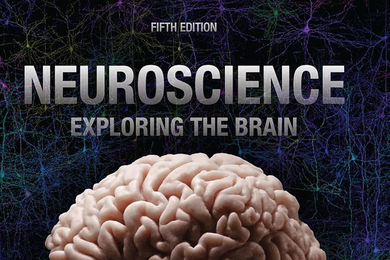The World Health Organization (WHO) recommends screening all infants for hearing loss before six months of age to prevent permanent damage such as speech and language impairment, learning disabilities and much more. In Brazil, the government has gone so far as to mandate screenings for all infants, but despite these efforts many infants go without testing due to limited medical resources.
A new telemedicine solution called Sana AudioPulse allows health care providers around the world to screen for hearing impairment through a simple mobile phone application. The Sana AudioPulse team, which is made up of students from MIT and the Computer Science and Artificial Intelligence Laboratory (CSAIL), Harvard, Northeastern and the Universidade Federal do Rio Grande do Norte (UFRN) in Brazil, was recently honored as the winner of the GSMA Mobile Health Challenge. The team competed against students from universities around the world at the GSMA Health Alliance’s Mobile Health Summit in Cape Town, South Africa, this summer to win the competition.
“The team’s victory is a tribute to the energy and intelligence of volunteers working on a challenging and important clinical problem motivated by the promise to improve health care through innovation,” said Sana program faculty advisor Peter Szolovits, a professor of electrical engineering and computer science and health sciences and technology and a CSAIL principal investigator. Sana is a student organization at MIT that is dedicated to revolutionizing health care delivery for rural underserved populations through mobile platforms.
The Sana AudioPulse technology, which is being developed as part of the Sana program, employs the Sana mobile health platform to provide community health care providers the ability to test infants for hearing loss.
“While hearing loss is a very serious issue around the globe, not every infant is screened because of resource limitations like limited access to screening equipment and prohibitive costs. Using the Sana telemedicine technology platform we are able to give access and care to those who couldn’t get it before,” said Dr. Kenneth Paik, a postdoctoral fellow in biomedical informatics at Harvard Medical School and the Laboratory of Computer Science at Massachusetts General Hospital and director of operations for Sana. “Our focus is on putting the device, which requires a highly trained audiologist to administer, into the hands of community health workers or nurses and making it simpler and cheaper to use.”
The idea for the project came from Dr. Ikaro Silva, a postdoctoral fellow at the Harvard-MIT Division of Health Sciences and Technology (HST), who became interested in applying the Sana platform to his research in audiology. A native of Brazil, Silva was well versed in the health care needs of the country and passionate about seeing what could be done to improve access to hearing screenings for infants across the nation. A student team was them assembled to devise a sustainable business plan for the project under the guidance of Paik, Dr. Ana Guerreiro (UFRN) and Silva. The multinational team consisted of MIT students Marzyeh Ghassemi (CSAIL) and Andrew Schwartz (HST), Northeastern University and MIT HST.S14 student Lauren Scanlon, and UFRN students Talis Barbalho and Anna Giselle Ribeiro.
The Sana AudioPulse technology will remove the need for a trained audiologist to be on site for every screening by allowing users to employ the open-source Sana mobile platform. The test is simple to operate and utilizes a two-channel speaker and microphone that have been calibrated to perform a distortion product otoacoustic emission (DPOAE) test, a standard method for analyzing hearing. The device is hooked up to a mobile phone and a probe, which is inserted into the patient’s ear. The probe plays a stimulus into the patient’s ear and the response emitted back by the patient’s ear is recorded.
From this recording, which is uploaded onto a remote server, a trained audiologist can analyze the results to see if there is any evidence of hearing loss. By using a cellphone to send test results to off-site audiologists, the Sana AudioPulse team will be able to significant lower the cost and expand the accessibility of hearing tests, according to Silva.
Uploading tests to a remote server for validation by a trained professional not only removes the burden from rural health care providers, but also “allows audiologist to access thousands more patients than they would be able to see in a day or a week at a hospital,” according to Lauren Scanlon.
Buoyed by their win at the GSMA Mobile Health Challenge, the team is now busy finalizing their prototype and testing how the system operates in a real hospital. A pilot will be conducted this year at a rural hospital in Brazil. A parallel test also is being planned under the clinical guidance of audiologist Cheryl Edwards at Children’s Hospital in Waltham to compare the effectiveness of the Sana AudioPulse system against state-of-the-art medical equipment. The team also hopes to extend their work beyond infant screenings in Brazil.
“Sana AudioPulse is also scalable outside Brazil, we have people in Mexico who are interested, as well as people in Asia,” Silva said. “What’s important about this is if you don’t catch a baby that has hearing loss within six months and give the child a hearing aid, later on it’s already too late, the damage is already permanent. This is why it’s so important to be screening all infants for hearing loss so we can prevent permanent cognitive problems.”
For more information on Sana AudioPulse, please visit: http://sana.mit.edu/audiopulse/.
A new telemedicine solution called Sana AudioPulse allows health care providers around the world to screen for hearing impairment through a simple mobile phone application. The Sana AudioPulse team, which is made up of students from MIT and the Computer Science and Artificial Intelligence Laboratory (CSAIL), Harvard, Northeastern and the Universidade Federal do Rio Grande do Norte (UFRN) in Brazil, was recently honored as the winner of the GSMA Mobile Health Challenge. The team competed against students from universities around the world at the GSMA Health Alliance’s Mobile Health Summit in Cape Town, South Africa, this summer to win the competition.
“The team’s victory is a tribute to the energy and intelligence of volunteers working on a challenging and important clinical problem motivated by the promise to improve health care through innovation,” said Sana program faculty advisor Peter Szolovits, a professor of electrical engineering and computer science and health sciences and technology and a CSAIL principal investigator. Sana is a student organization at MIT that is dedicated to revolutionizing health care delivery for rural underserved populations through mobile platforms.
The Sana AudioPulse technology, which is being developed as part of the Sana program, employs the Sana mobile health platform to provide community health care providers the ability to test infants for hearing loss.
“While hearing loss is a very serious issue around the globe, not every infant is screened because of resource limitations like limited access to screening equipment and prohibitive costs. Using the Sana telemedicine technology platform we are able to give access and care to those who couldn’t get it before,” said Dr. Kenneth Paik, a postdoctoral fellow in biomedical informatics at Harvard Medical School and the Laboratory of Computer Science at Massachusetts General Hospital and director of operations for Sana. “Our focus is on putting the device, which requires a highly trained audiologist to administer, into the hands of community health workers or nurses and making it simpler and cheaper to use.”
The idea for the project came from Dr. Ikaro Silva, a postdoctoral fellow at the Harvard-MIT Division of Health Sciences and Technology (HST), who became interested in applying the Sana platform to his research in audiology. A native of Brazil, Silva was well versed in the health care needs of the country and passionate about seeing what could be done to improve access to hearing screenings for infants across the nation. A student team was them assembled to devise a sustainable business plan for the project under the guidance of Paik, Dr. Ana Guerreiro (UFRN) and Silva. The multinational team consisted of MIT students Marzyeh Ghassemi (CSAIL) and Andrew Schwartz (HST), Northeastern University and MIT HST.S14 student Lauren Scanlon, and UFRN students Talis Barbalho and Anna Giselle Ribeiro.
The Sana AudioPulse technology will remove the need for a trained audiologist to be on site for every screening by allowing users to employ the open-source Sana mobile platform. The test is simple to operate and utilizes a two-channel speaker and microphone that have been calibrated to perform a distortion product otoacoustic emission (DPOAE) test, a standard method for analyzing hearing. The device is hooked up to a mobile phone and a probe, which is inserted into the patient’s ear. The probe plays a stimulus into the patient’s ear and the response emitted back by the patient’s ear is recorded.
From this recording, which is uploaded onto a remote server, a trained audiologist can analyze the results to see if there is any evidence of hearing loss. By using a cellphone to send test results to off-site audiologists, the Sana AudioPulse team will be able to significant lower the cost and expand the accessibility of hearing tests, according to Silva.
Uploading tests to a remote server for validation by a trained professional not only removes the burden from rural health care providers, but also “allows audiologist to access thousands more patients than they would be able to see in a day or a week at a hospital,” according to Lauren Scanlon.
Buoyed by their win at the GSMA Mobile Health Challenge, the team is now busy finalizing their prototype and testing how the system operates in a real hospital. A pilot will be conducted this year at a rural hospital in Brazil. A parallel test also is being planned under the clinical guidance of audiologist Cheryl Edwards at Children’s Hospital in Waltham to compare the effectiveness of the Sana AudioPulse system against state-of-the-art medical equipment. The team also hopes to extend their work beyond infant screenings in Brazil.
“Sana AudioPulse is also scalable outside Brazil, we have people in Mexico who are interested, as well as people in Asia,” Silva said. “What’s important about this is if you don’t catch a baby that has hearing loss within six months and give the child a hearing aid, later on it’s already too late, the damage is already permanent. This is why it’s so important to be screening all infants for hearing loss so we can prevent permanent cognitive problems.”
For more information on Sana AudioPulse, please visit: http://sana.mit.edu/audiopulse/.






